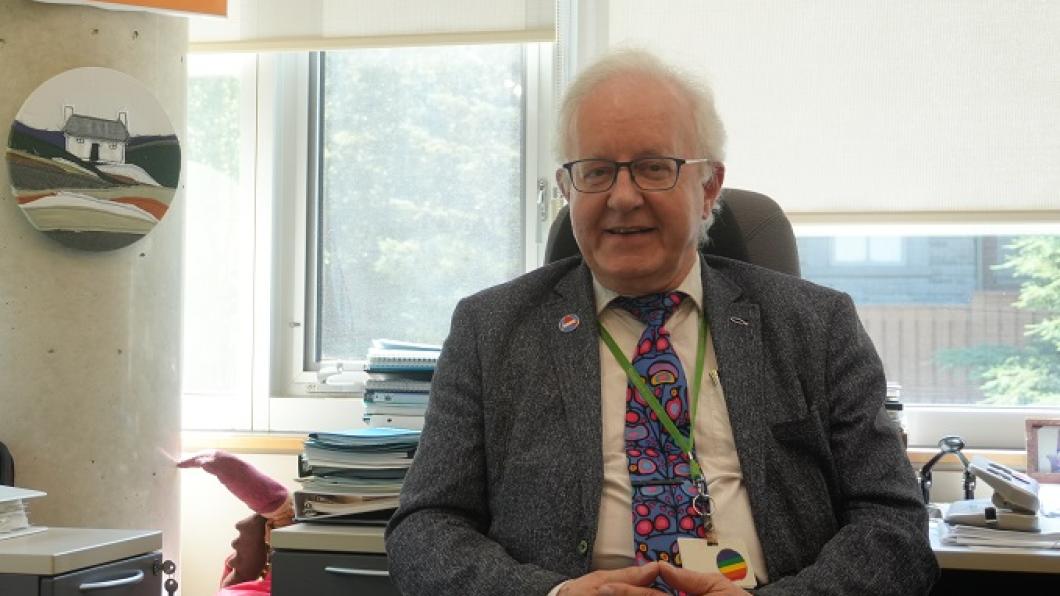
Four decades of leadership in pediatric brain injury rehabilitation and family centred care
On the southwest corner of the second floor at Holland Bloorview Kids Rehabilitation Hospital sits a bright, eclectic office filled with colourful art, family photos and mementos from decades of care. It belongs to Dr. Peter Rumney, the esteemed director of inpatient care and brain injury rehabilitation, and a steady presence here for more than 38 years.
We sat down with Dr. Rumney to hear about what drew him to pediatric brain injury care, what his days look like now and what’s kept him coming back for almost four decades.
Q: What first attracted you to Holland Bloorview and brain injury rehabilitation?
A: My first attraction was actually a summer rotation here as a medical student. Everything else had been lectures, so getting to work on a multidisciplinary team and see how you treat not just the patient, but the whole family — that stayed with me. On a personal level, my brother sustained a brain injury during labour and delivery, leaving him with long-term physical and developmental challenges. Growing up, I saw how our parents were either supported or overlooked by the medical system. I recall a neurosurgeon at SickKids being one of the first to give my mother hope – I thought: ‘I want to be that kind of doctor — the one who listens and offers a way forward.’
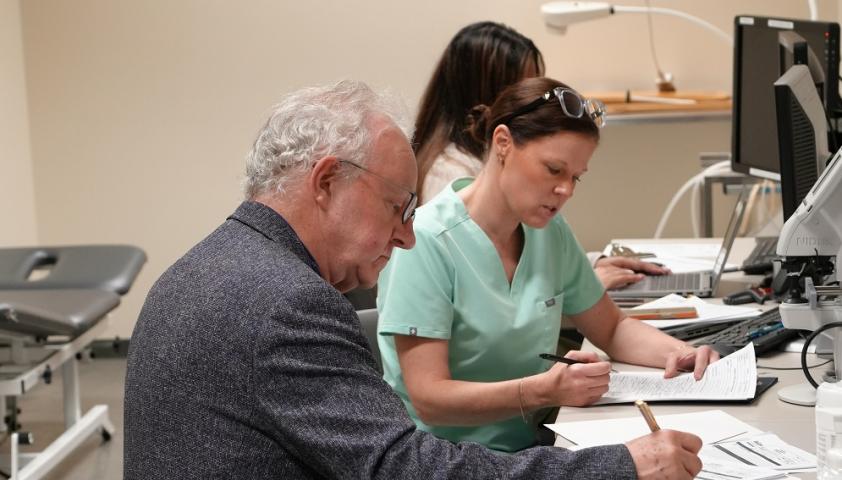
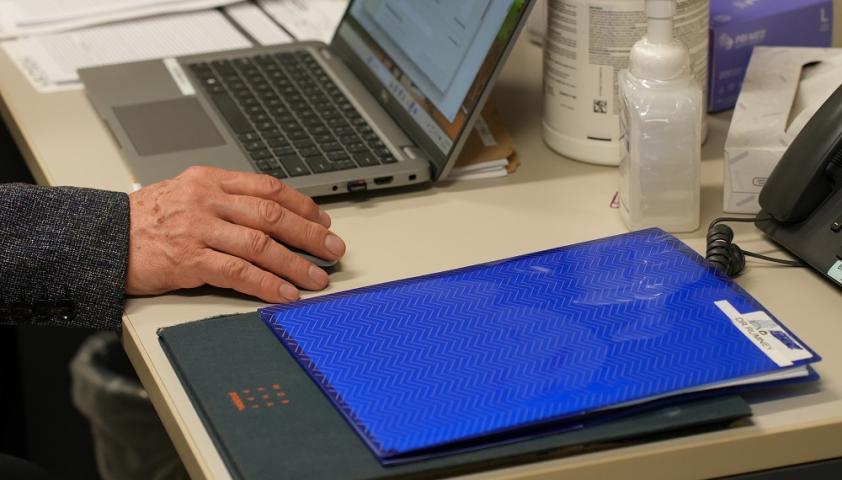
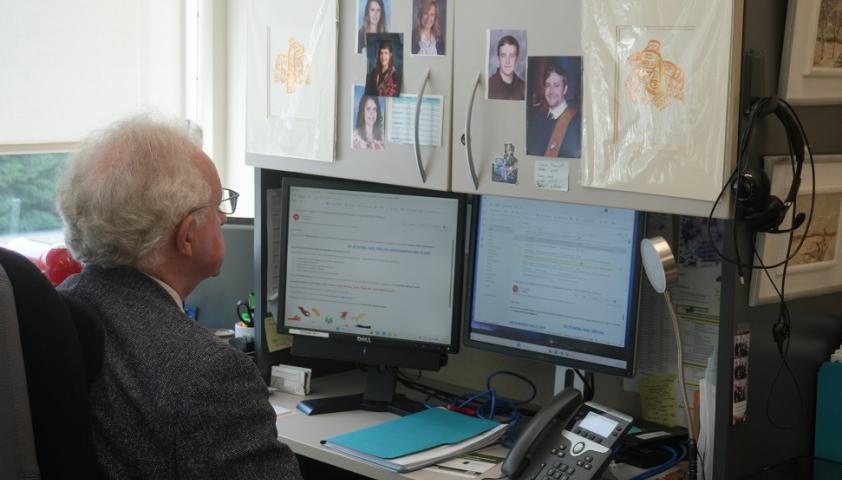
Q: What does a typical day look like for you on the inpatient brain injury rehab unit?
A: It starts early in the morning with the nursing team’s report, flagging overnight issues or family concerns. Sometimes it’s a simple medication adjustment, sometimes it’s sitting down for a tough conversation with a family. New admissions often take hours to carefully understand the child’s injury, family dynamic and hopes for recovery. It’s not like taking a car in for a new part – rehab is a process of learning, accommodating and finding new ways to work together. Then afternoons are a mix of follow-up clinics with kids and families months or years after discharge, hospital safety meetings and work on medical records systems. I also chair the hospital’s Code Blue Working Group, reviewing emergency response calls to continuously improve care.
Q: How would you describe the evolution of care and rehab over the course of your career?
A: I’ve been fortunate to witness remarkable changes in how care is delivered. What once involved rigidly scheduled visiting hours has become a fully family-integrated rehabilitation program. When I started as a medical student, there were strict visiting hours. Parents could visit between four and eight, and at eight o’clock everyone was ushered out. The kids were put in pyjamas and sent to bed. Today, families are considered part of the rehab team, and they have to be, because the whole goal is to get that child home and back into their community.
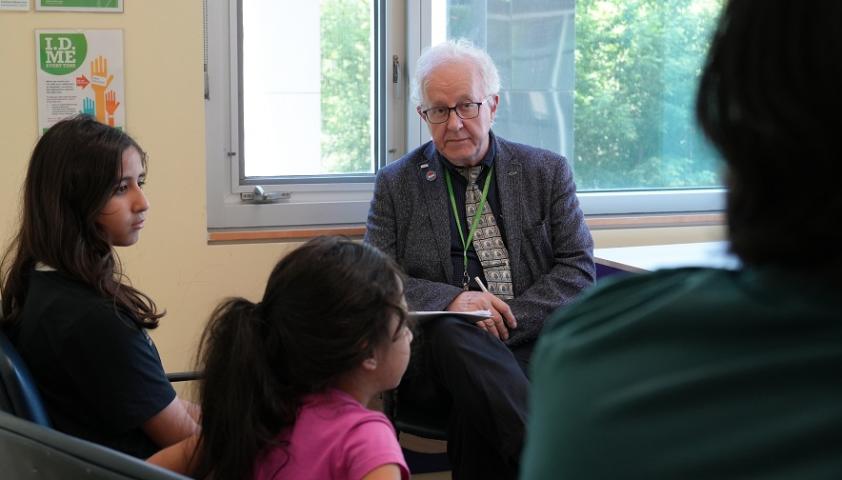
Q: You’ve made some lasting contributions to brain injury research and education through the Bloorview Research Institute. What are you most proud of?
A: Pioneering collaboration in the 1990s with music therapists, using structured music activities to help children with brain injuries improve attention and memory. It was a bit ahead of its time! Now similar work is happening in Europe for people with Alzheimer’s. It’s nice to see those ideas come full circle.
Q: What’s kept you here for almost four decades?
A: It’s the families. Even though you meet them at some of the lowest points in their lives, you get to see them rebuild. I’ve had patients come back with spouses, with kids of their own. That’s what makes it meaningful. I think the biggest legacy isn’t the papers you publish. It’s the people you teach, the colleagues you work with and the families you’ve helped.
Q: You are retiring from your role as director of inpatient care this fall to oversee a lighter case load and focus your time in the ambulatory brain injury clinic. What’s next?
A: I used to say when we have a cure for brain injury that I wanted to retire and take up carpentry. Well, I am going to retire, and I am going to do more carpentry. But it’s not because brain injury’s been cured. The awareness is better now, and the care is better, and I’m proud to have been part of that. But now it is the time to hand the reigns over to my esteemed colleagues in the field.